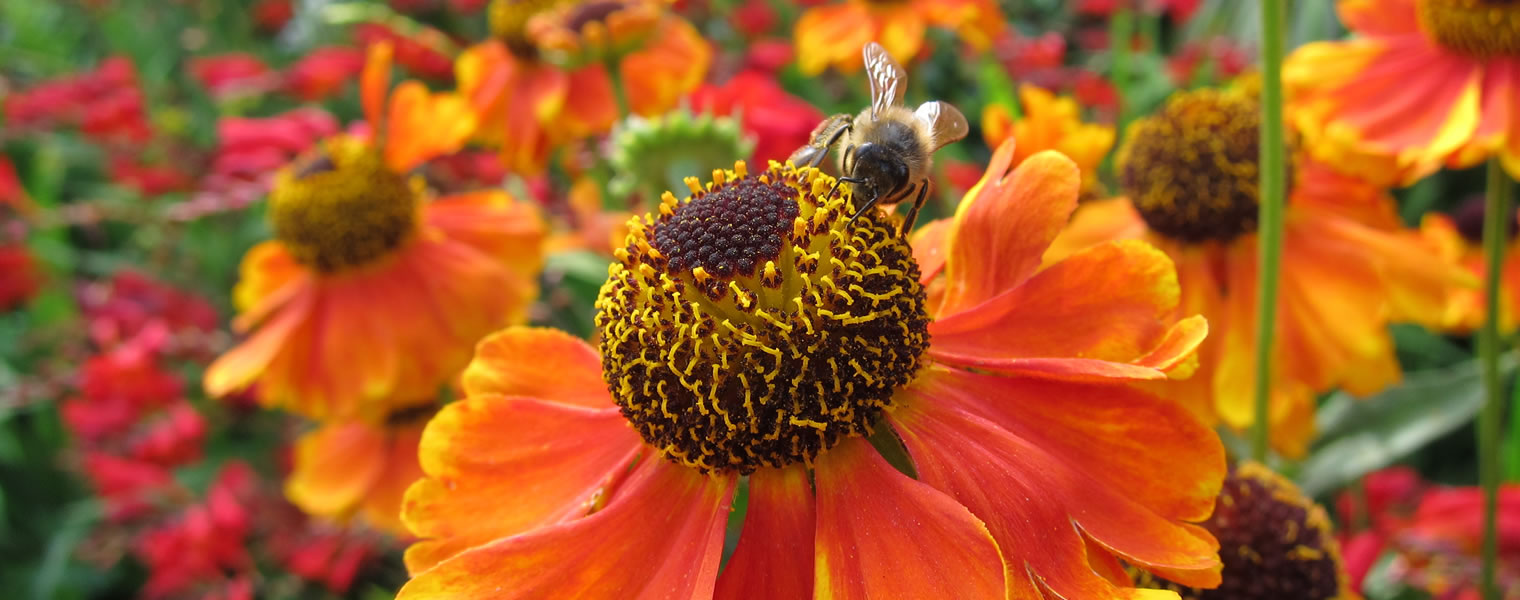Hartley News Online Your alumni and supporter magazine
Bees are vital to our way of life, our food security and our environment, but their numbers are in decline worldwide. The University’s Professor Guy Poppy and Dr Robbie Girling, who carried out research at Southampton during a fellowship, have found that diesel fumes may be one of the factors reducing bees’ abilities to find their food sources.
In the UK alone, it’s estimated that around 20,000 lives are lost each year due to atmospheric pollution. As well as the threat to our public health, toxic nitrous oxide, found in exhaust fumes, is known to be chemically active. The researchers found that these fumes are affecting the chemicals in flower scents, making it more difficult for bees to detect them.
“Bees pollinate around 70 per cent of the food we eat; without them, the fruit and veg sections in supermarkets would look very different. So bees are an economically important model to investigate the effects of air pollution caused by diesel fumes. We know this is a growing concern, particularly after the scandal around Volkswagen diesel emissions last year,” says Guy, Professor of Ecology at the University of Southampton and Chief Scientific Adviser to the Food Standards Agency.
The researchers exposed the 11 most common chemicals that occur in the scents of flowering plants, and all of the major components that make up the scent of oilseed rape, an important crop to the UK economy, to diesel fumes. They found that nine of these chemicals were altered by the fumes. “The flower scents were altered surprisingly rapidly by the interaction with the exhaust fumes,” says lead author Robbie. Robbie completed part of his PhD at Southampton and worked with Guy as a postdoctoral research assistant before taking up a lectureship at the University of Reading, where he is now based. “We found that it was the nitrous oxide in the exhaust fumes, rather than diesel itself, that caused the changes. Nitrous oxide is produced by all combustion engines,” he adds.
They also looked at whether the behaviour of the bees was affected by the chemical changes in the flower scents. Just like Pavlov’s dog, which famously learned to associate a ringing bell with a meal, bees can learn to associate certain specific smells with food, such as nectar from a plant. When a bee smells these specific scents, it sticks out its tongue (known as a proboscis). “After the flower scents had been exposed to diesel fumes, the bees stuck out their tongues significantly less often in response to the scents. This indicates that changes caused by the diesel fumes mean that the bees no longer recognise those scents as food,” says Robbie.
We are not saying that diesel fumes are the sole cause, or even the most important cause, of the decline in bees. However, our latest findings suggest that they are one of many factors affecting bees, and they may have a greater impact than we previously thought.
This new evidence is just one part of a very complex picture that policy makers need to consider to make decisions on how to protect bees, explains Guy: “These studies are part of a tiered risk assessment. For the first tier, often called the worst case scenario, it’s important that detailed studies like this are carried out in controlled conditions in the laboratory to ensure there is an effect and the cause can be demonstrated: in this case that the nitrous oxide gases cause the effect.” The completion of the first tier triggers the second (extended lab or semi-field trials) and third tier (field trials) to take place – or if the risk identified is too high, the risk assessment stops and measures are put in place immediately to mitigate this risk. This ensures that high risks can be quickly identified and managed or mitigated, and the ones that are likely to cause an effect in the real world can be determined.
The research was published in Scientific Reports and the Journal of Chemical Ecology, and was funded by the Leverhulme Trust.
The next phase will be to scale the tests up to larger systems in the field. Robbie has plans to continue this research in the second and third-tier using field-scale experiments and more intricate laboratory experiments that enable investigations of the bees’ behaviours when in-flight. “We really need to translate what we know from relatively simple laboratory assays into real-world experiments to try to understand better the impacts that this phenomenon has, not only on the bees but also on the important pollination services that they provide,” Robbie explains. “The training I received at Southampton as part of my PhD really inspired me and lit my passion for work in the field of chemical ecology. This subsequently led to me working in one of the leading laboratories in the field in the United States and eventually to my current lectureship position at Reading.



